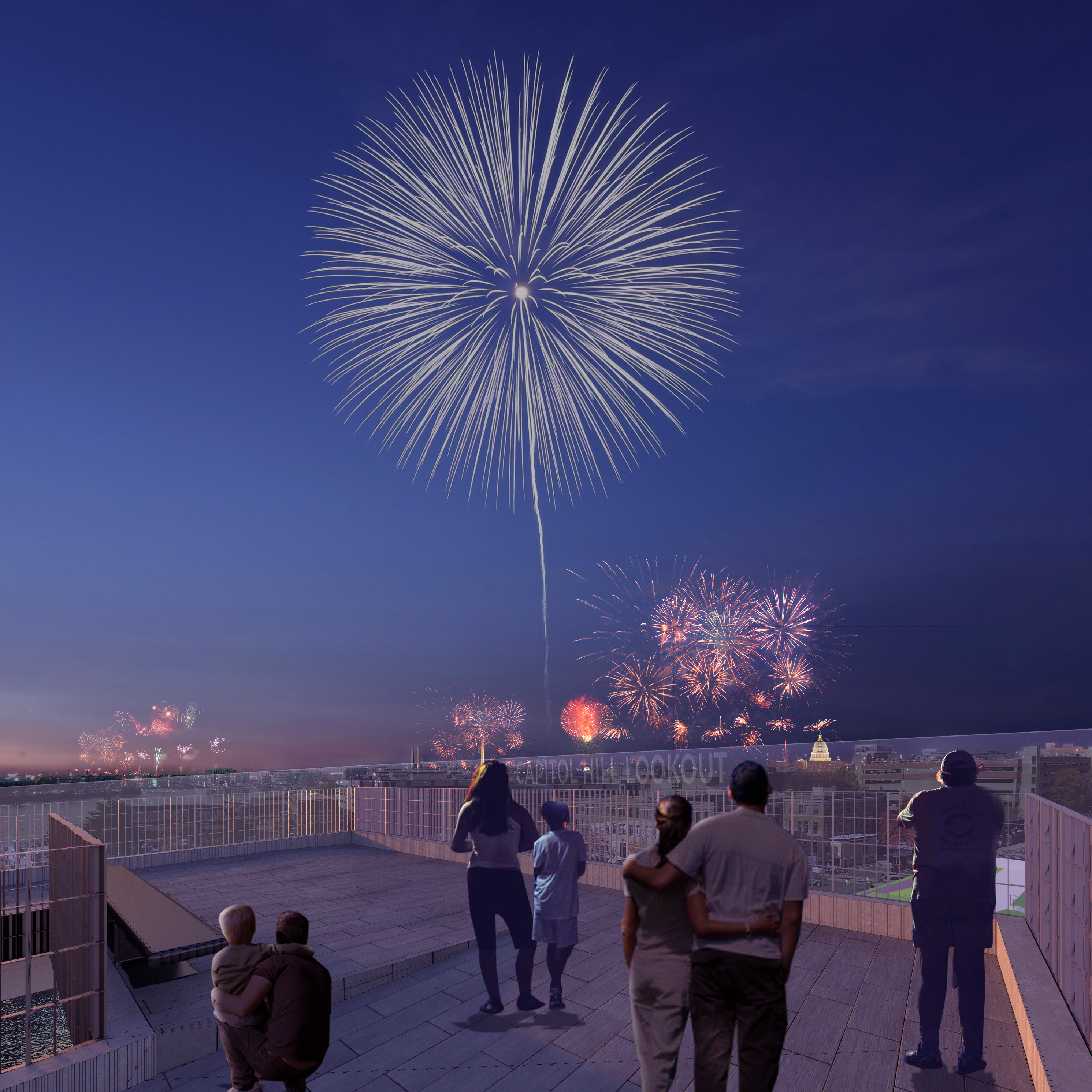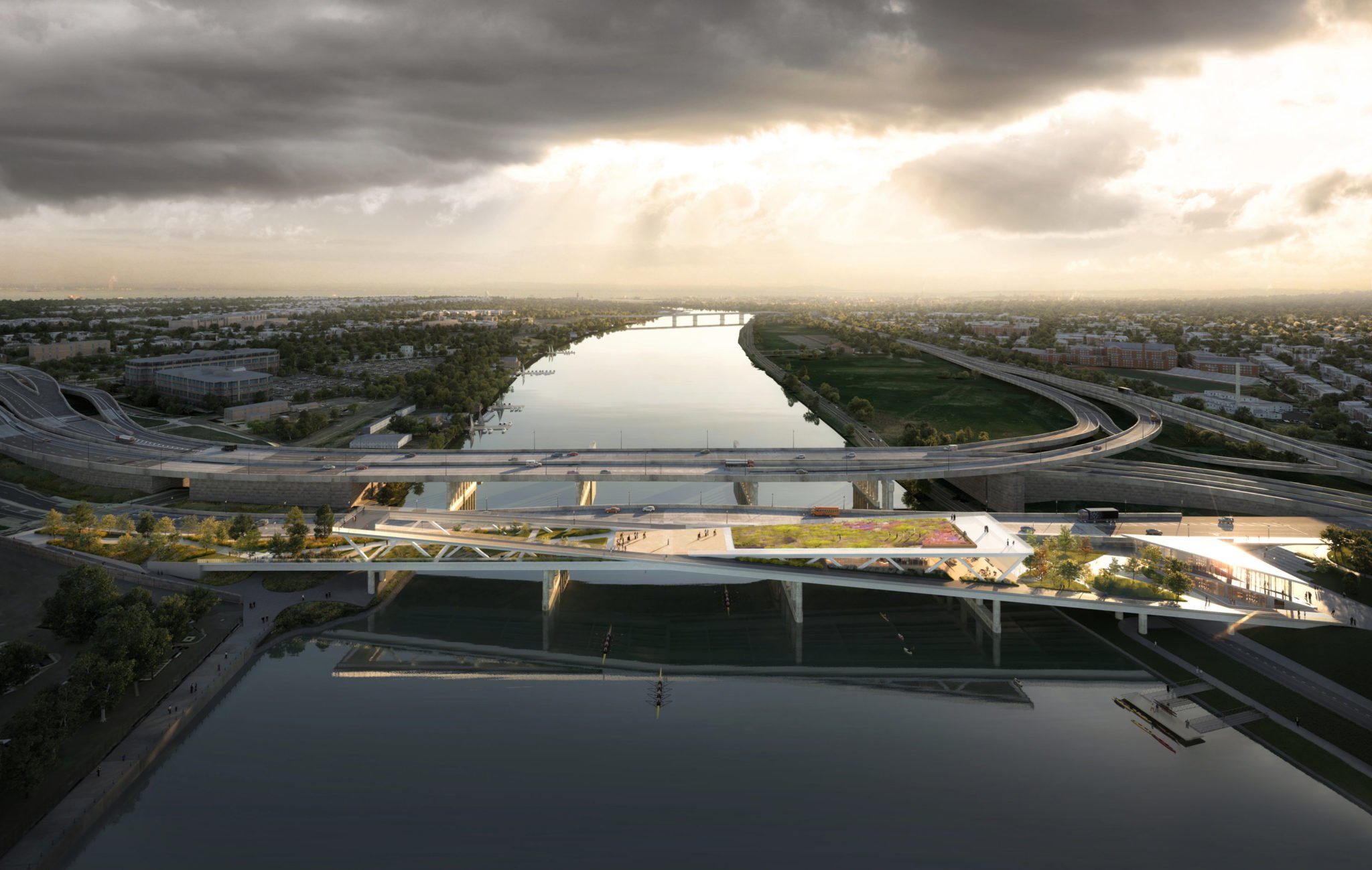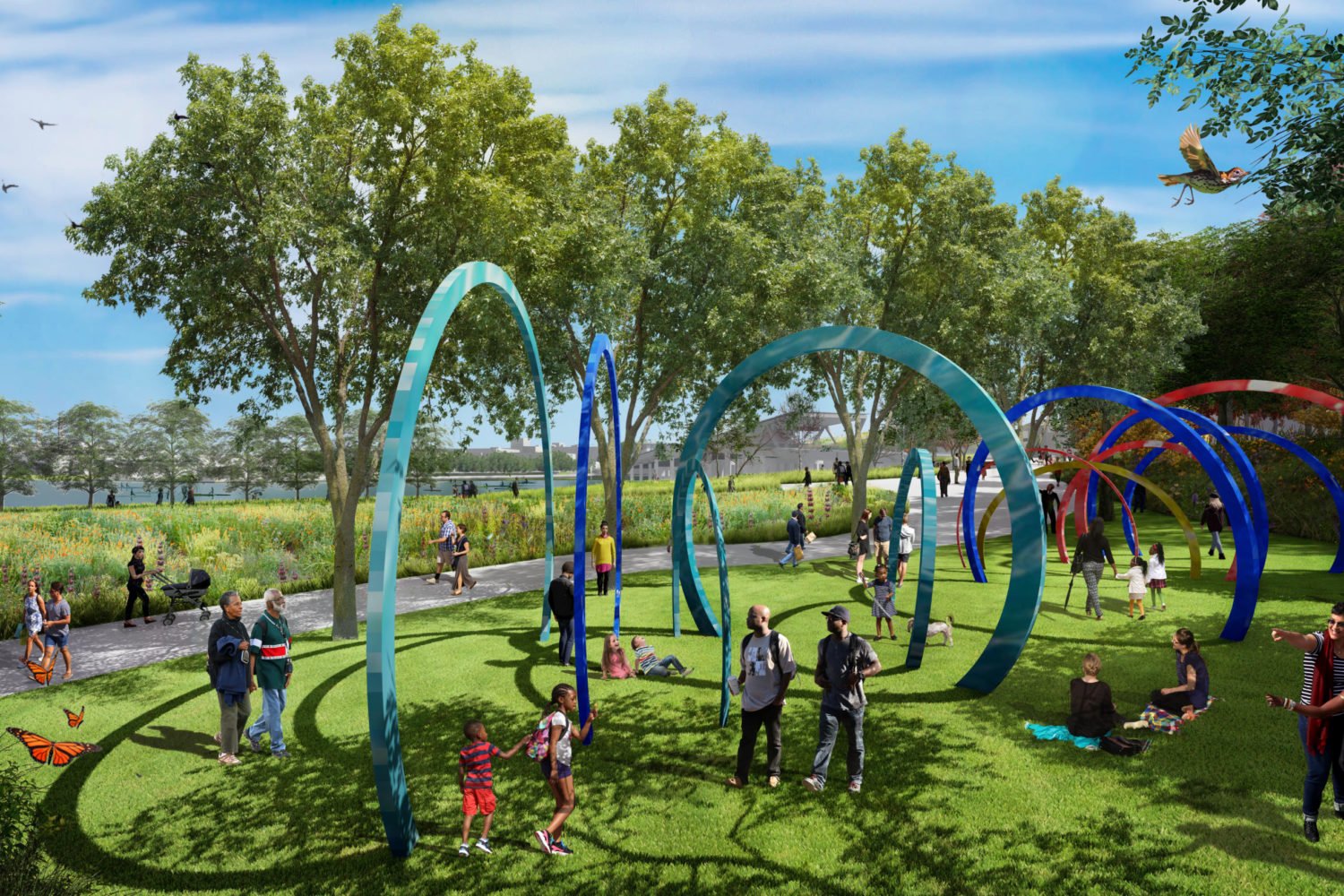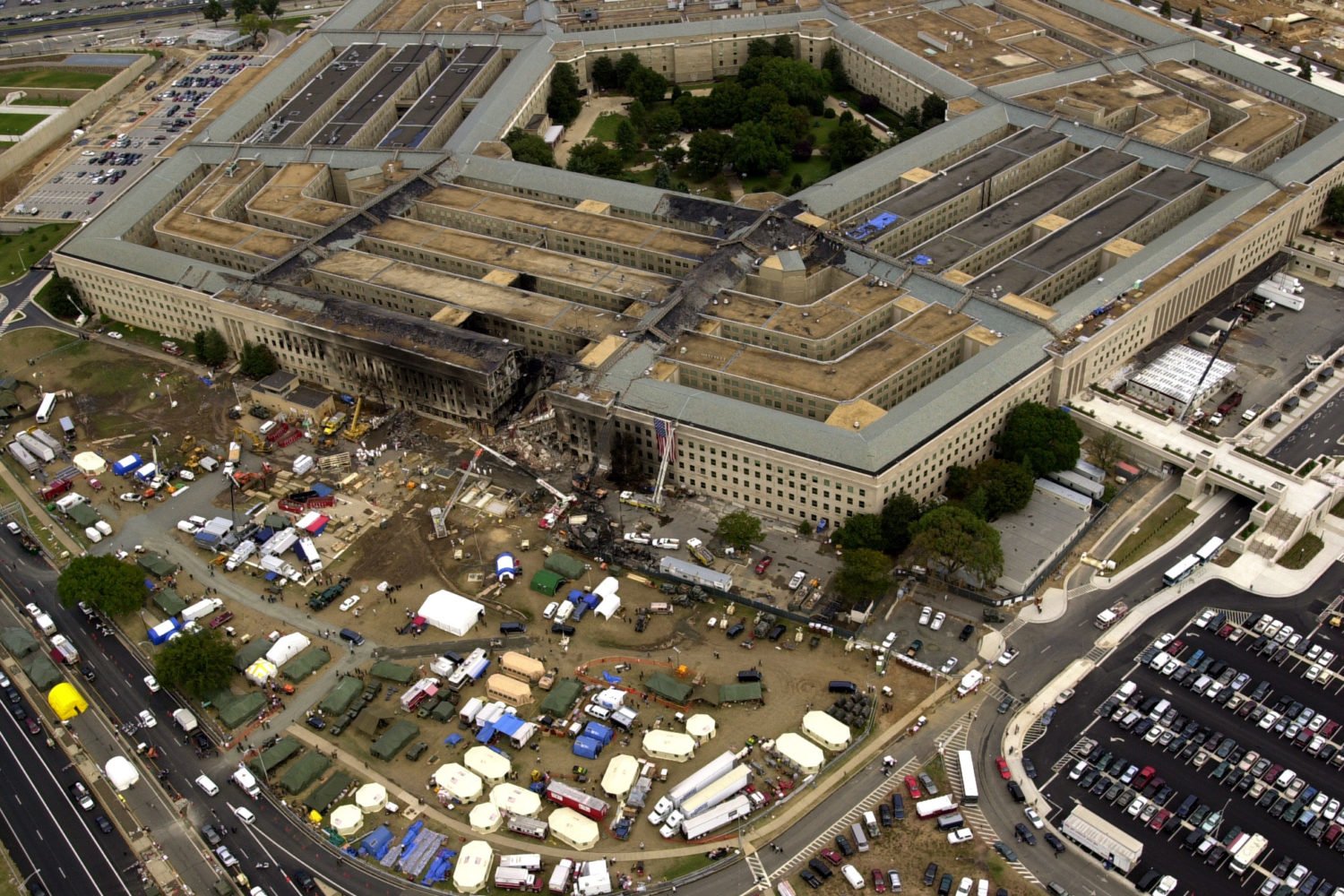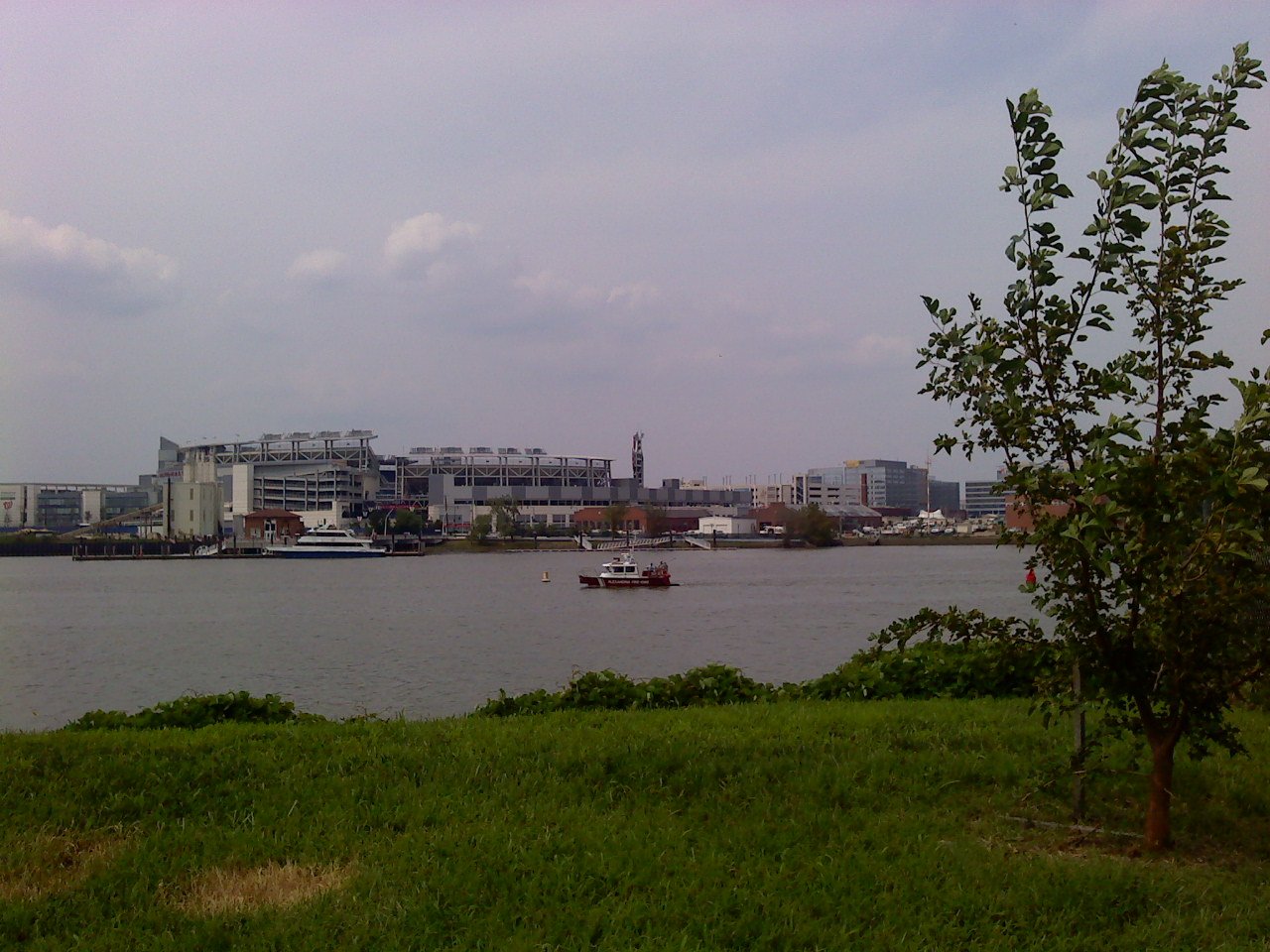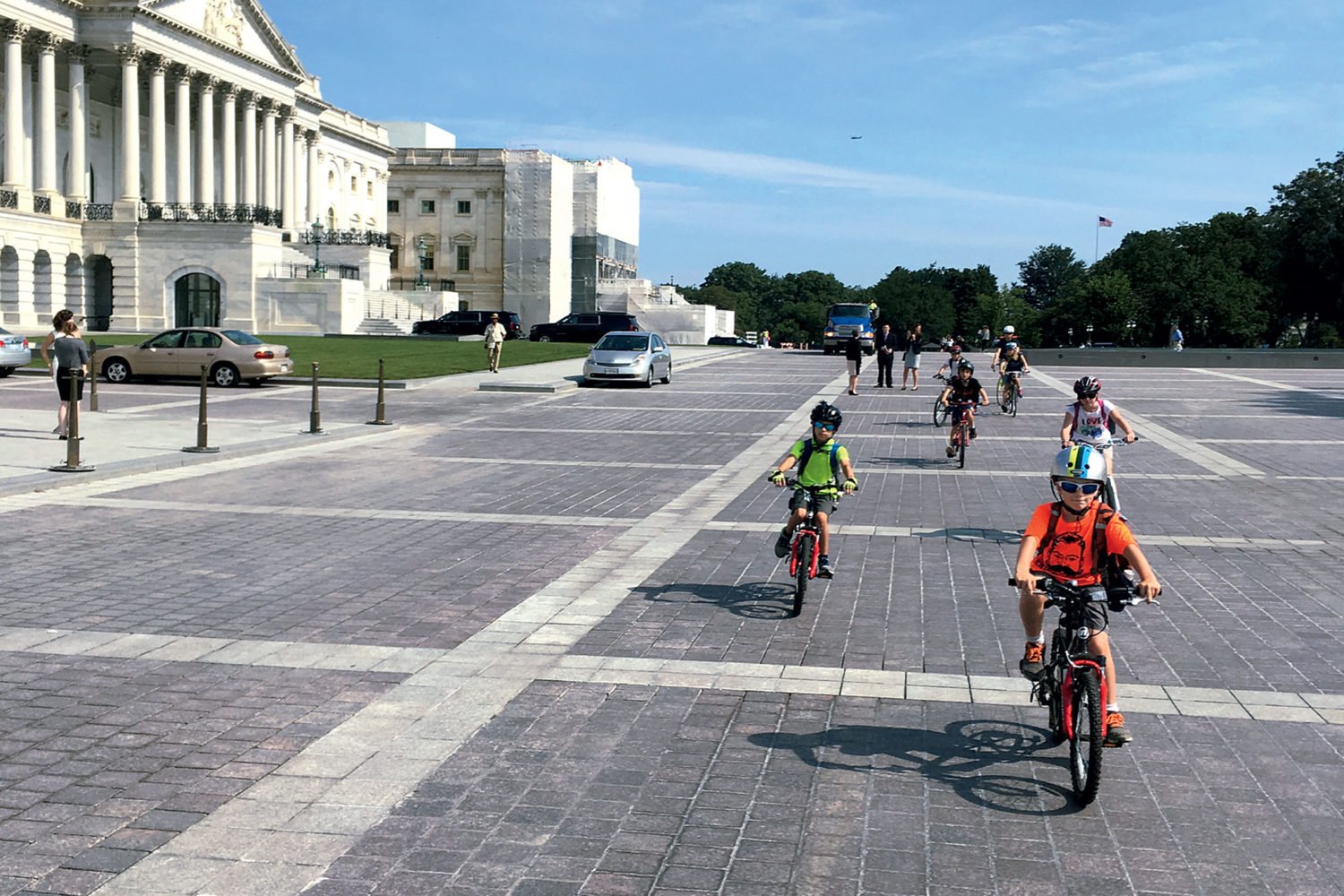The National Capital Planning Commission on Friday approved final designs for the 11th Street Park Bridge, which will connect Anacostia to Navy Yard. The roughly $92 million park will perch atop leftover pilings and piers from its namesake bridge.
The park aims to be more than a place for recreation and relaxation: The goal is to knit together the two communities on either end of the span without displacing people in the historically disenfranchised neighborhoods on its eastern side. Residents have been heavily involved in planning, says Scott Kratz, senior vice president for Building Bridges Across the River, a Ward 8-based nonprofit that has been one of the main forces behind the park.
In fact, Kratz says, locals selected the design teams OMA and OLIN. The ambitious park is slated to open in the first half of 2025, with construction beginning next year. Here’s what you can anticipate.
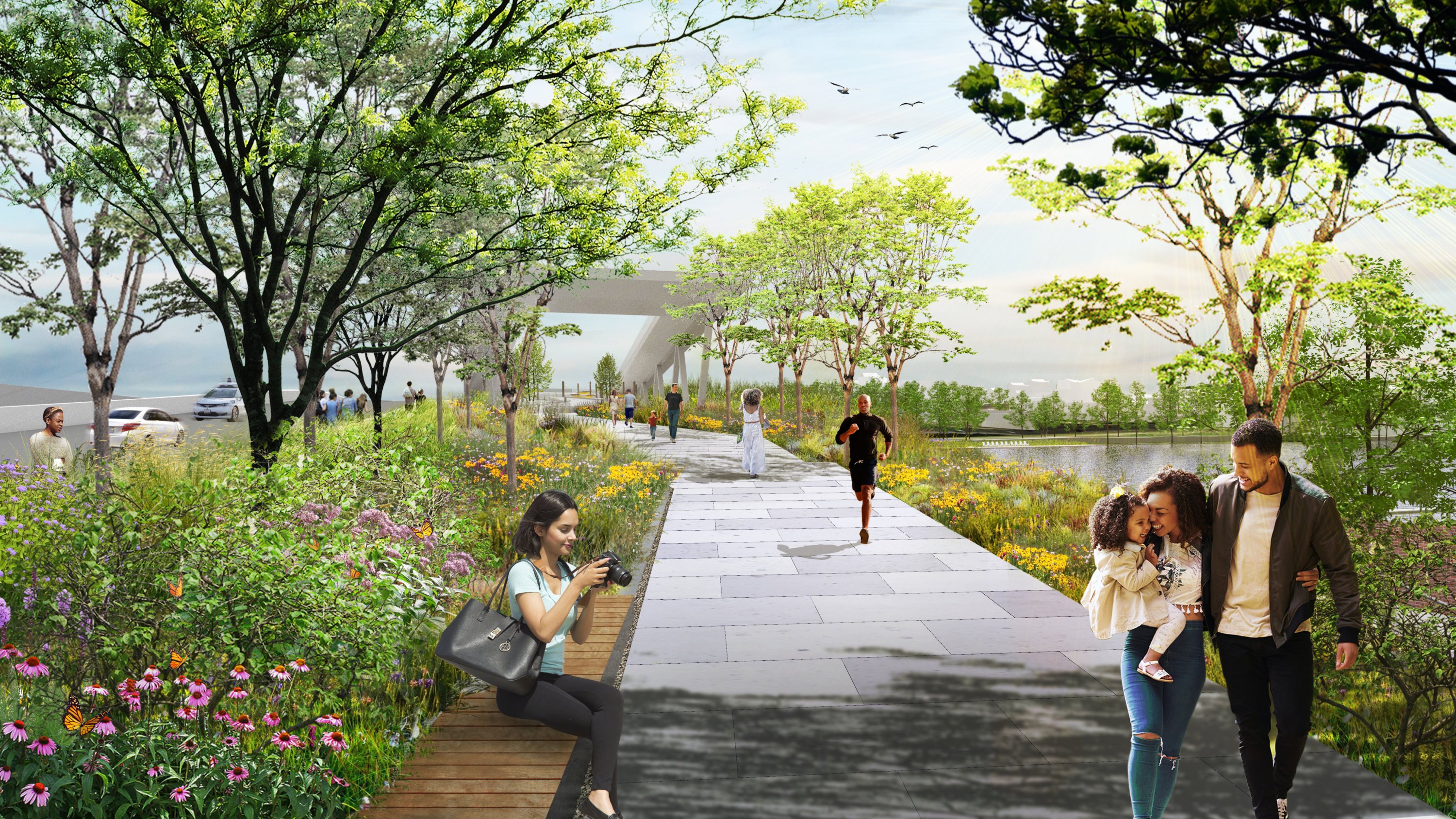
Areas to commune with nature
The 11th Street Bridge Park will be roughly the size of three football fields, leaving room for lots of green space. Embracing the area’s flora, the park’s landscaping design includes approximately 180 native trees (cottonwood, oak, and fiery red maple) and native plants, such as flowering milkweed to attract monarch butterflies.
The Navy Yard side of the park will feature 1.2 acres of trails and landscaped green space, while the Anacostia side will house an urban agriculture garden—a significant addition, says Kratz, given Ward 8’s high concentration of food deserts. A kayak and canoe launch area will be located near the Anacostia River Trail for school groups to use on weekdays and for everyone on weekends.
“One of the key goals for the park is to reengage residents with the Anacostia River, which is this stunning natural resource that has been hiding in plain sight for way too long,” Kratz says.
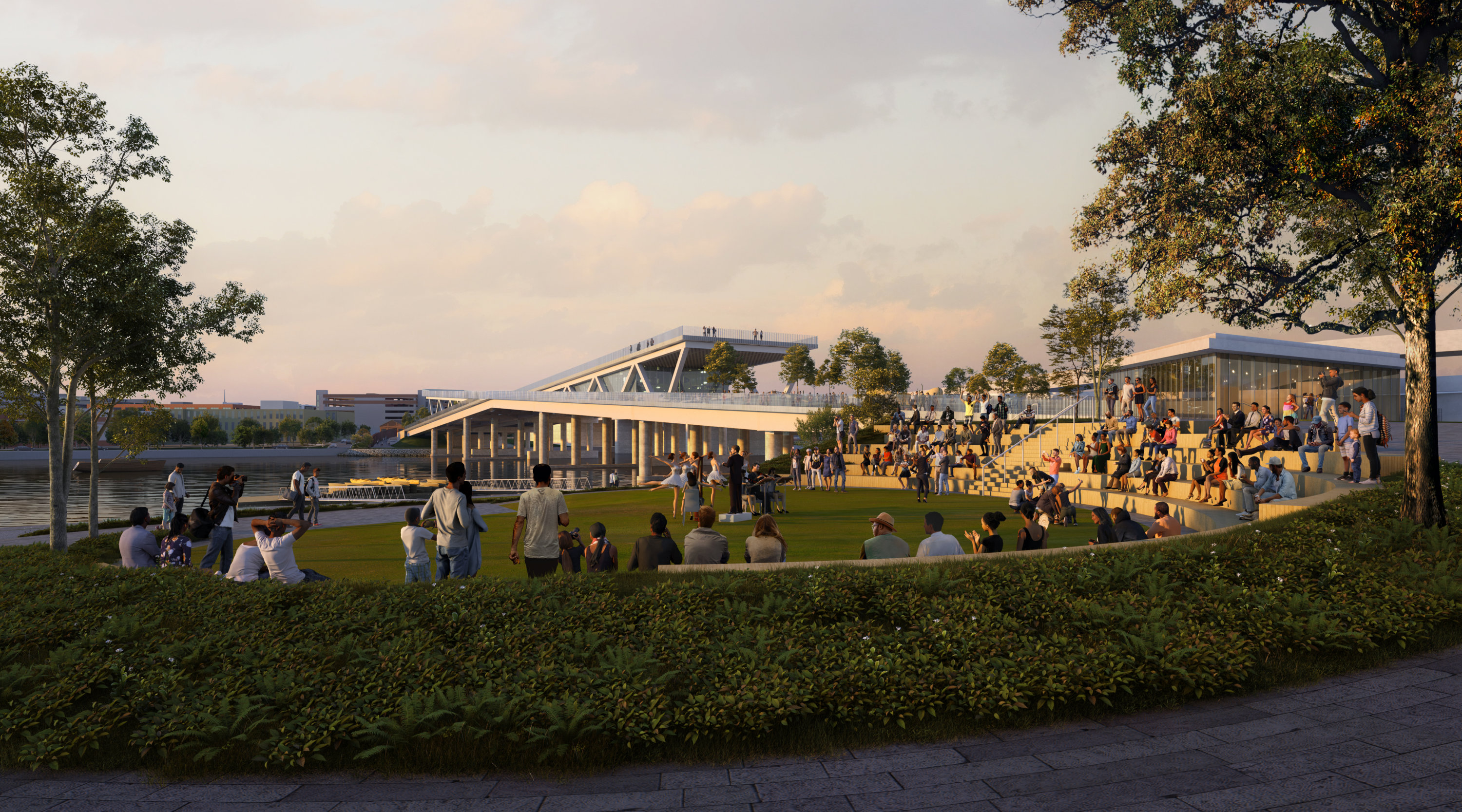
Concerts, classes, and events
A 8,500-square-foot environmental education center, staffed by the Anacostia Watershed Society, hopes to “inspire the next generation of river stewards,” says Kratz, by offering classes on river restoration and health; leading science experiments within a wet lab; and opening an exhibition space that explains the watershed’s indigenous history. On the weekends, the solar-powered center will also have programming for adults—perhaps workshops on how to incorporate native plants or build a pollinator garden.
After class, enjoy a show. Built into an existing natural terrace just off of the bridge will be a 250-seat amphitheater where local artists will perform. “On nights and weekends, you could see things such as go-go concerts, spoken word performances, and drama,” Kratz says.
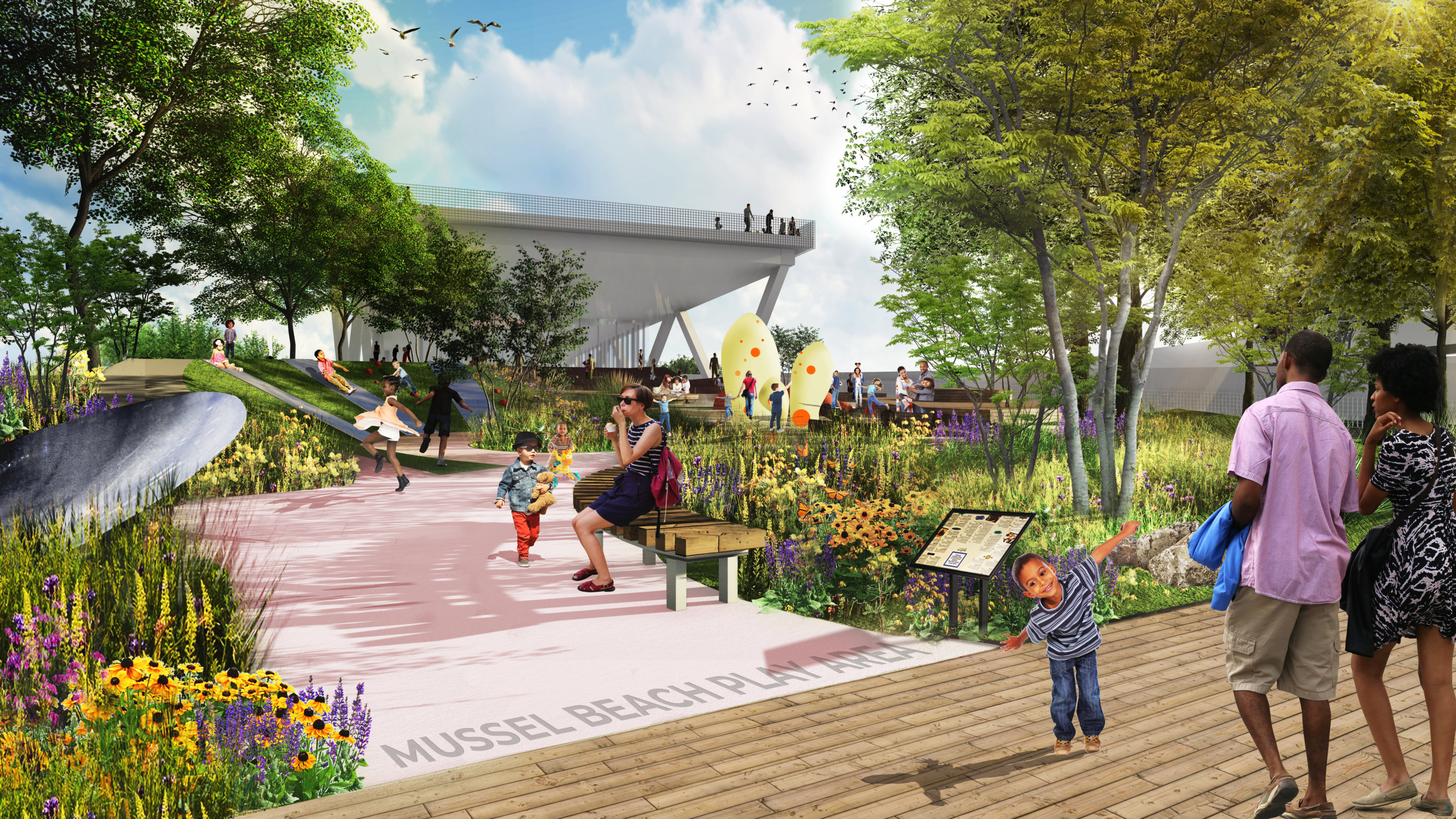
Places to come together
Once the park opens, look for spaces to gather and relax, like a community hammock grove for open-air relaxation. It’s a functional art installation that will feature ten large, colorfully woven hammocks, each inspired by a local community leader and designed by artists Aliana Grace Bailey, Rhea Beckett, and Syreeta C.
According to the plan, parkgoers will also be able to grab a bite to eat or a glass of wine at a sheltered café (the vendor is yet to be announced) as well as attend a diverse variety of events on the “community porch.” Think dance parties or a local art market, Kratz says, noting that both the cafe and community porch are sheltered by a “great lawn” that acts as a green roof and is also open for lounging and recreation.
Meanwhile, kids will be able to frolic in an 11,000-square-foot play area, with playground equipment inspired by native flora and fauna, including giant concrete mussel shells and “seaweed climbers” for children. The park’s multiuse “Anaquash Plaza”—from the Nacotchtank term for “village trading center,” the origin of the name Anacostia—will also act as a central gathering place.
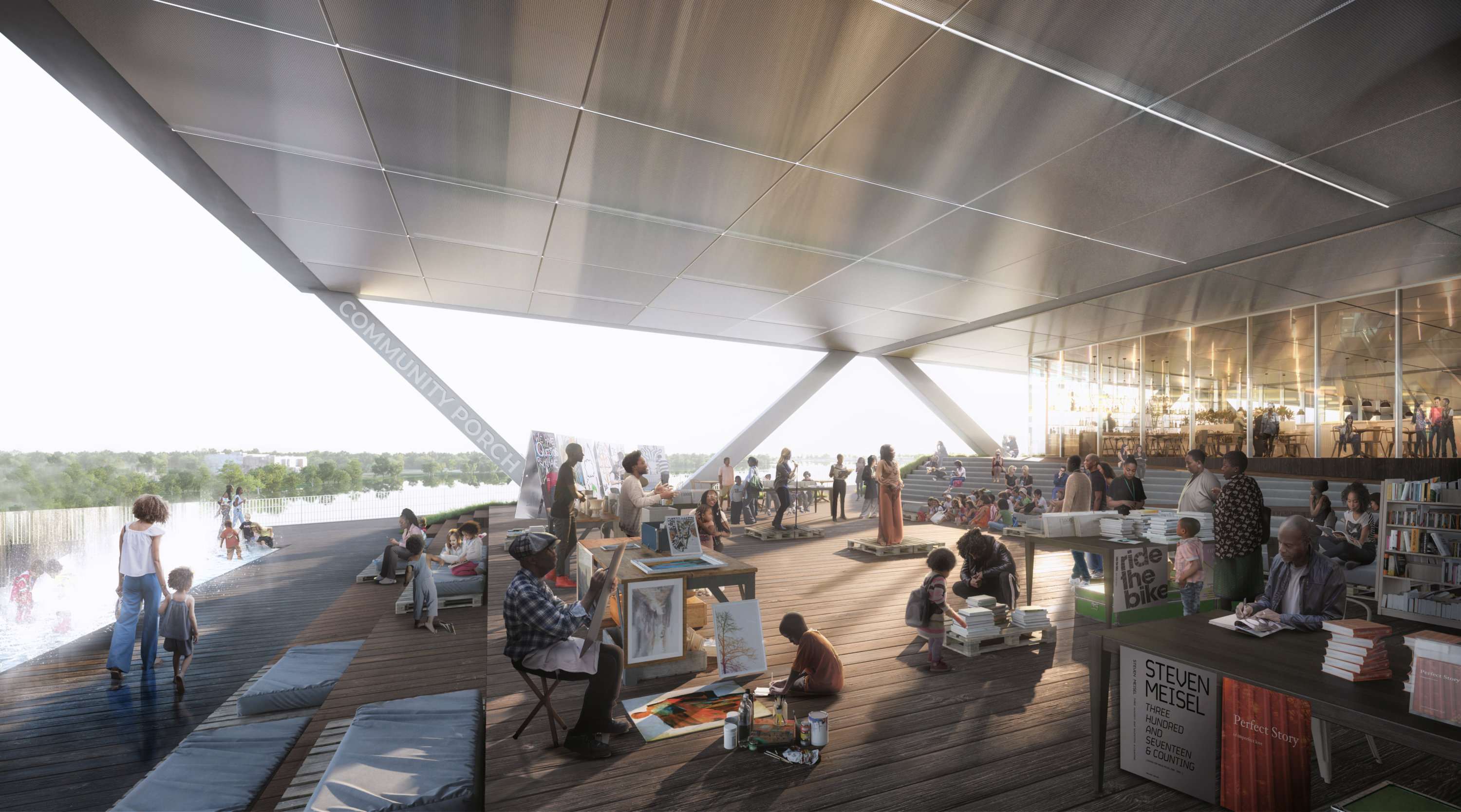
Art from local creatives
Keeping to the park’s hyperlocal theme, there will also be a platform for DC artists to display their work. Already, the park has commissioned several installations from local artists—notably all women at the moment.
A mother daughter-duo is creating 11 large, multi-colored arches entitled “Anacostia’s Sunrise/Sunset Portals.” Artists Nicole Bourgea and Mickey Demas are painting a mural entitled “Our Land” that depicts the area’s native Piscataway Tribe as well as Ward 8 farmer JJ Boone propagating a pawpaw tree. And Becky Borlan is building a hanging sculpture inspired by the plant life along the Anacostia.
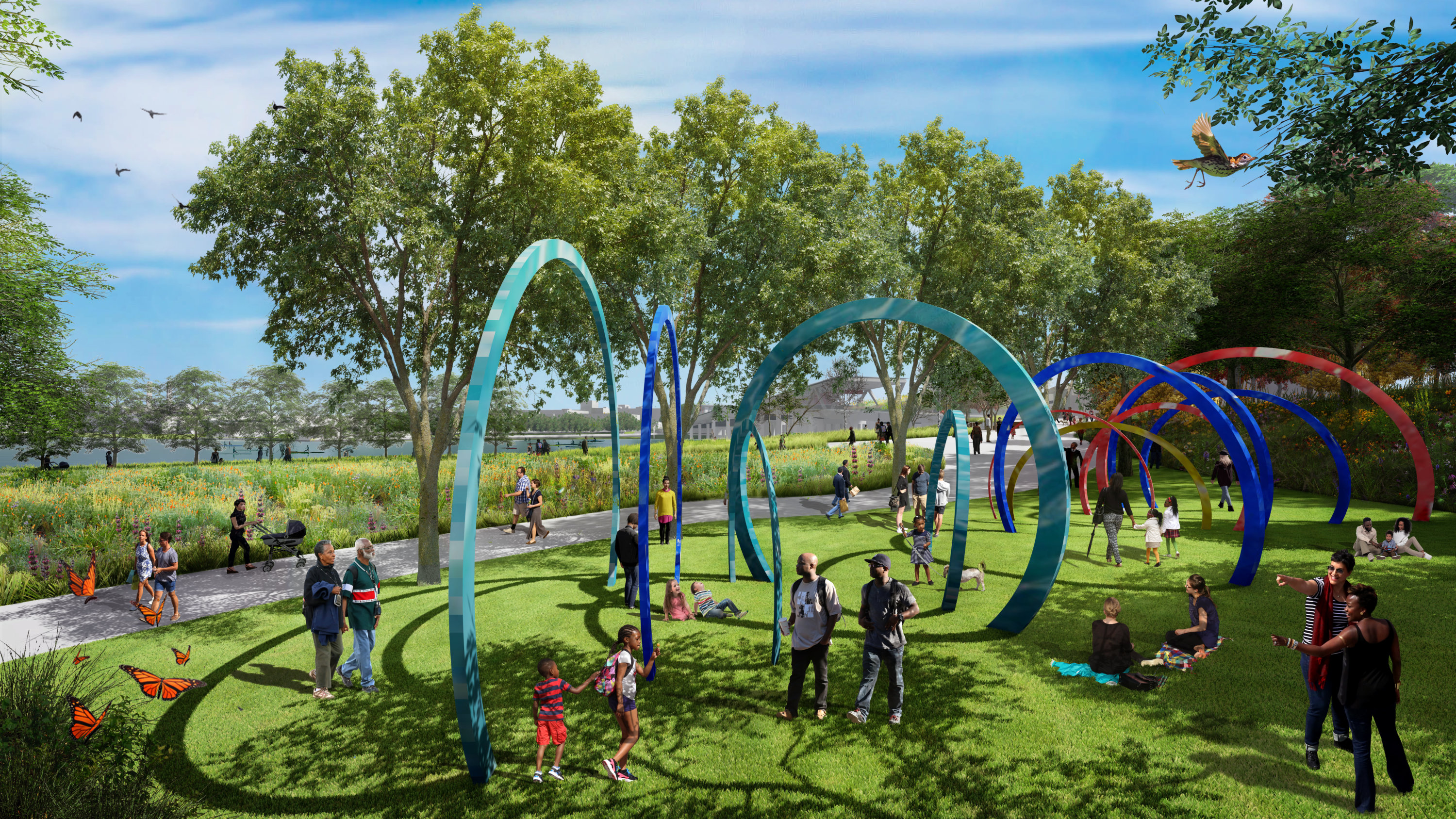
Insta-worthy views
The park, shaped a bit like a squashed “X”, will have two overlooks: the Capitol Overlook on the north end and Anacostia Overlook on the south end, providing picture-perfect vistas—and a future viewpoint for the Fourth of July fireworks.
“Either end of the bridge can get you up high enough to have these really spectacular views,” Kratz says. On the Anacostia side, he says, “you can see all the way to the Frederick Douglass home up on Cedar Hill. And on the Capitol Hill side, you can see the Capitol dome and the Washington Monument.”
